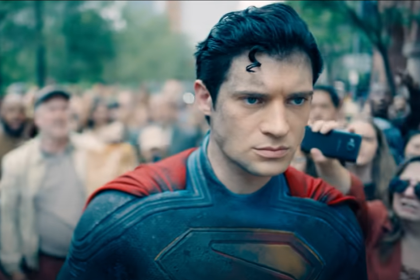
This past week, 14 years after he was gunned down in Los Angeles, the FBI released their files associated with their investigation of the death rapper Christopher “Notorious B.I.G.” Wallace on March 8, 1997. According to official documents, at 12:45 a.m., his motorcade approached a red light about 50 yards from the Petersen Automotive
Museum. Sean Combs was in another car that ran through the intersection while the other two vehicles stopped.
Allegedly a black Chevrolet Impala SS pulled up to the passenger side of Biggie’s vehicle with an African American male in a blue suit and bow tie who released six shots into the passenger side door of the truck, four of which hit Notorious B.I.G. in the chest.
The files provide valuable insight and detail into the investigation,
which took the Los Angeles Police Department a month to begin. The
files indicate that one suspect in the shooting, LAPD Officer David A.
Mack, allegedly drove a 1995 black Chevrolet Impala SS with chrome
wheels like the vehicle described in the shooting. In his home, police
found a shrine to Tupac Shakur in his garage, five 9mm guns and Gecko
9mm ammunition. Biggie was killed by a 9mm gun, and the ammo matched
that of the type that penetrated the rap superstar.
Although Mack was considered a suspect, another informant described
the alleged gunman as “a contract killer” with a “middle east sounding
name” who was an ex-member of the Southside Crips gang. He was also
alleged to be a member of “Fruits of Islam” at that time.
On January 21, 1998, the FBI received a DMV photo from a redacted source believed to be Harry Billups, also known as Amir Muhammad. But the FBI’s files, noted that another witness claimed that the shooter was not a real Muslim because he didn’t greet people face-to-face, but was more likely an LAPD officer because “I know a cop when I see one.”

The most interesting information in the files was that, after the
murder, an anonymous person placed a telephone call allegedly accusing
LAPD Officer Mack of being involved in Biggie’s murder. And that an
informant claimed that B.I.G. and many of his cohorts had connections
to New York City’s Genovese crime family. The released documents note
that the FBI speculated they could have evidence of Biggie’s shooting,
but did not have enough proof to support their assumption.
Documents also not that in 2004, an informant suggested that Biggie
was not the intended target and that they also investigated a suspect
in Texas some years later that involved a blue 1996 Bentley registered
in Houston to a Houston rap entrepreneur, who was allegedly
near the crime scene the night of the murder.
Finally, the FBI records reveal a possible drug motive. One informant
suggested that Death Row owner Suge Knight owed Tupac Shakur $10
million in royalties and that many of the label’s artists and employees were
involved in drug distribution. The informant also added that the
reason some major artists reportedly left Death Row records was because of
the alleged drug distribution requirement. The informant, as documented
in the FBI records, indicated that Tupac was owed millions in royalties
and that he was going to leave Death Row with unreleased songs worth
millions as well as tell on the drug operation. As a result, the FBI
files said that the informant alleged that Death Row employees made it
look like L.A. Crips murdered Tupac and Wallace.
The death of both Biggie and Tupac will forever remain in the minds of
many. However, the FBI records do provide valuable insight on the
investigation and reminds us all of how authorities have dropped the
ball on both investigations. Especially since, in 1997, a key witness
in Tupac’s murde was “executed from point blank range” in East
Orange, N.J. He was allegedly killed by two teens who, by
accounts of FBI records, “had an uncle or some other relative who
lived in Los Angeles and was somehow involved with Death Row Records.” –torrance stephens, ph.d.














